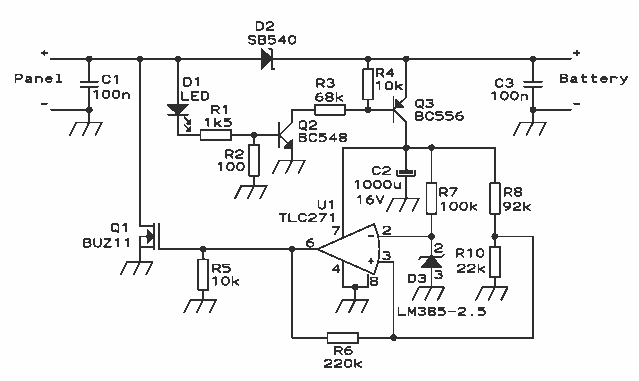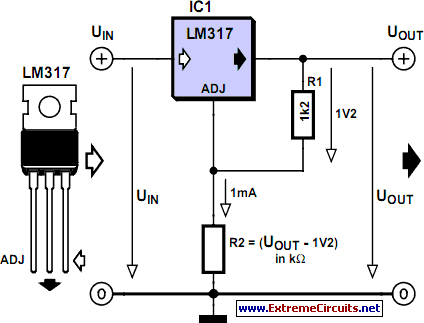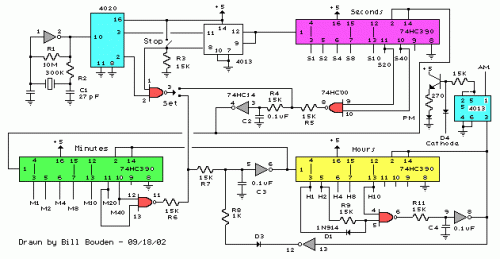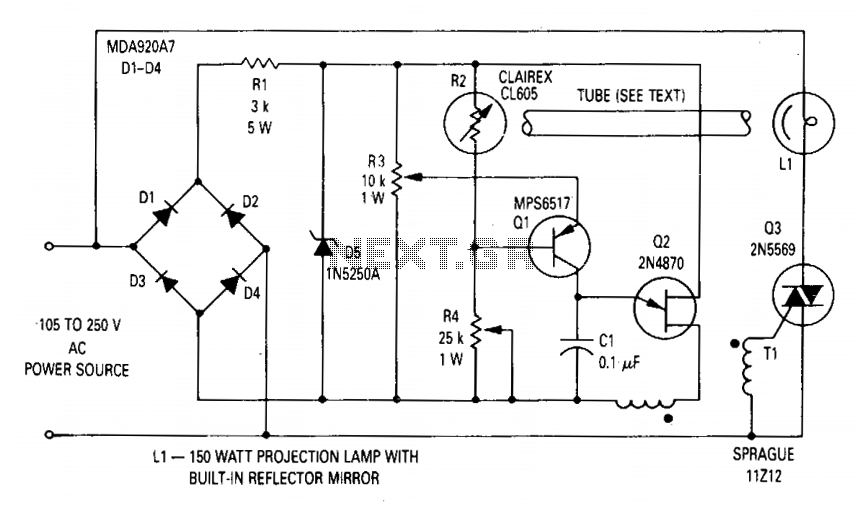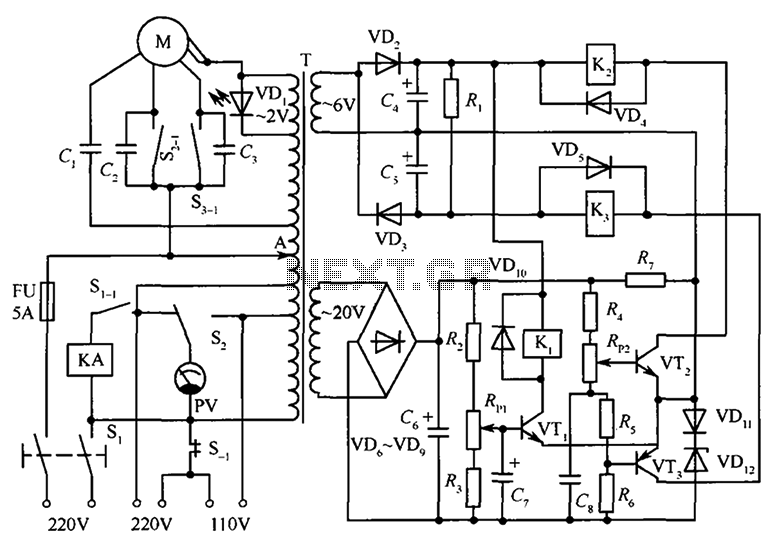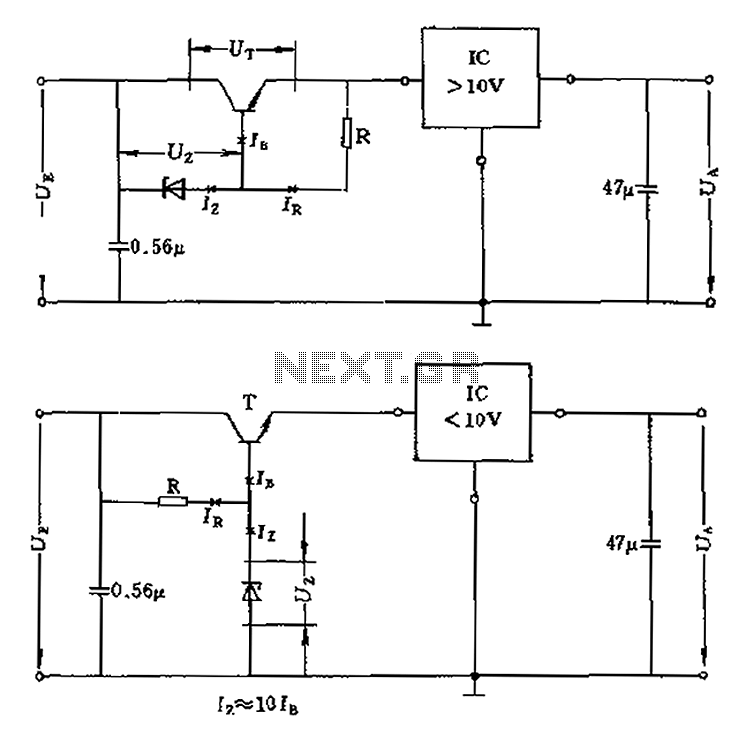
Off-line flyback regulator
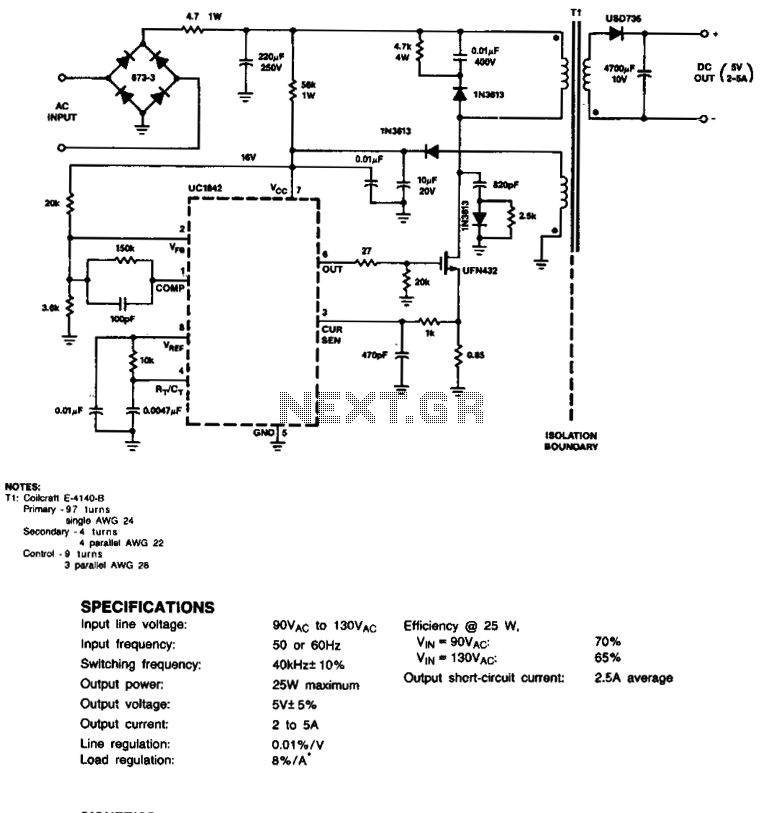
This circuit employs a cost-effective feedback scheme where the direct current voltage generated from the primary-side control winding is monitored by the UC1842 error amplifier. Consequently, load regulation is influenced by the coupling between the secondary and control windings, as well as by the transformer leakage inductance. For applications that necessitate improved load regulation, the UC1901 Isolated Feedback Generator can be utilized to directly sense the output voltage.
The circuit is designed to provide efficient power management by utilizing a feedback mechanism that ensures stable output voltage despite variations in load conditions. The UC1842 error amplifier plays a crucial role in this process, receiving the voltage from the primary-side control winding and adjusting the output accordingly. The effectiveness of this feedback system is largely determined by the magnetic coupling between the secondary and control windings of the transformer, which can introduce variations in the output voltage due to leakage inductance.
In scenarios where enhanced load regulation is critical, the UC1901 Isolated Feedback Generator serves as an alternative solution. This device directly senses the output voltage, allowing for more accurate feedback and improved performance under varying load conditions. By integrating the UC1901 into the circuit, designers can achieve tighter control over the output voltage, leading to better overall system stability and efficiency.
The circuit layout should include proper placement of the UC1842 and UC1901, ensuring minimal interference from external noise sources. Additionally, attention must be paid to the design of the transformer, particularly its winding configuration, to optimize the coupling between the primary and secondary windings. Implementing adequate filtering and decoupling techniques will further enhance the performance and reliability of the circuit, making it suitable for a range of applications requiring precise voltage regulation.This circuit uses a low-cost feedback scheme in which the dc voltage developed from the primary-side control winding is sensed by the UC1842 error amplifier. Load regulation is therefore dependent on the jcoupling between secondary and control windings, and on transformer leakage inductance.
For applications requiring better load regulation, a UC1901 Isolated Feedback Generator can be used to directly sense the output voltage.
The circuit is designed to provide efficient power management by utilizing a feedback mechanism that ensures stable output voltage despite variations in load conditions. The UC1842 error amplifier plays a crucial role in this process, receiving the voltage from the primary-side control winding and adjusting the output accordingly. The effectiveness of this feedback system is largely determined by the magnetic coupling between the secondary and control windings of the transformer, which can introduce variations in the output voltage due to leakage inductance.
In scenarios where enhanced load regulation is critical, the UC1901 Isolated Feedback Generator serves as an alternative solution. This device directly senses the output voltage, allowing for more accurate feedback and improved performance under varying load conditions. By integrating the UC1901 into the circuit, designers can achieve tighter control over the output voltage, leading to better overall system stability and efficiency.
The circuit layout should include proper placement of the UC1842 and UC1901, ensuring minimal interference from external noise sources. Additionally, attention must be paid to the design of the transformer, particularly its winding configuration, to optimize the coupling between the primary and secondary windings. Implementing adequate filtering and decoupling techniques will further enhance the performance and reliability of the circuit, making it suitable for a range of applications requiring precise voltage regulation.This circuit uses a low-cost feedback scheme in which the dc voltage developed from the primary-side control winding is sensed by the UC1842 error amplifier. Load regulation is therefore dependent on the jcoupling between secondary and control windings, and on transformer leakage inductance.
For applications requiring better load regulation, a UC1901 Isolated Feedback Generator can be used to directly sense the output voltage.
